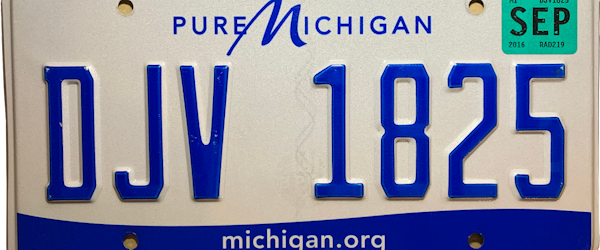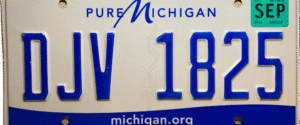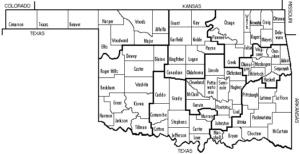Table of Contents
ToggleIn the healthcare sector, safety is paramount, not only for patients but also for medical professionals. One of the most significant risks that healthcare workers face is needlestick injuries, which can lead to exposure to infectious diseases and cause physical harm. A breakthrough innovation designed to address this issue is the self blunting needle. These needles have a unique safety mechanism that eliminates the sharp tip once used, minimizing the risk of needlestick injuries and offering enhanced protection for both medical staff and patients. In addition, the self blunting needle is beneficial for reducing trauma during procedures, making them an essential tool in modern healthcare.
The self blunting needle is a specialized medical device that reduces the risks associated with traditional needles. With its built-in safety features, this needle minimizes the likelihood of accidental punctures and needle-stick injuries. When the needle is inserted, it functions like any typical medical needle, but once the procedure is completed, the sharp tip is either automatically retracted or deactivated, making the needle blunt. This automatic safety feature provides a much-needed layer of protection for healthcare workers, as the traditional needles remain sharp even after they are disposed of, posing a continuous risk for accidental injuries.
What is a Self Blunting Needle and How Does It Work?
A self blunting needle is designed with a unique mechanism to reduce the risk of accidental needlestick injuries. When the needle is used, it functions in the usual way, being inserted into the patient’s skin for procedures such as blood drawing, IV insertions, or injections. However, after use, the needle’s sharp tip is automatically rendered blunt through a self-blunting mechanism. This mechanism can work in various ways, such as retracting the needle into the syringe or covering the sharp end with a safety shield. By doing so, it eliminates the risk of further injuries and minimizes the need for specialized disposal methods.
One of the key benefits of the self blunting needle is that it eliminates human error in the disposal process. Traditional needles require careful handling after use to avoid accidental injury, often requiring healthcare workers to manually activate safety mechanisms. With a self blunting needle, the safety feature is automatic, significantly reducing the chances of exposure to bloodborne pathogens. This innovation has been especially useful in environments where time is of the essence, such as emergency rooms, where the risk of injury is higher due to the fast-paced nature of the work. The automatic safety feature also means that healthcare workers don’t have to focus on ensuring proper disposal, allowing them to concentrate on patient care.
The Importance of Self Blunting Needles in Healthcare
Self blunting needles play a crucial role in enhancing safety in medical environments. Healthcare professionals are at high risk of needlestick injuries, which can lead to the transmission of dangerous diseases like HIV, Hepatitis B, and Hepatitis C. By using self blunting needles, the risk of needlestick injuries is drastically reduced. This has a direct impact on improving overall safety in healthcare settings, protecting both the staff and patients. In addition to preventing injuries, these needles also help reduce the emotional burden on healthcare workers, as they no longer need to worry about potential exposure to infections from needles.
Beyond their safety benefits, self blunting needles also contribute to improving patient comfort. The blunt tip of the needle is less likely to cause pain during insertion compared to traditional needles with sharp tips. This can be particularly important for patients who require frequent injections, blood draws, or IV insertions. For instance, children and elderly patients, who may have more sensitive skin, benefit from the reduced trauma that self blunting needles provide. The overall experience of receiving medical care becomes more comfortable and less distressing, contributing to a better overall patient experience.
The Advantages of Using Self Blunting Needles

One of the most significant advantages of self blunting needles is their ability to minimize the risk of needlestick injuries. Needlestick injuries have been a longstanding concern in healthcare settings, leading to infections and, in some cases, severe health complications. By using self blunting needles, healthcare professionals can eliminate the sharp tip that typically causes these injuries. This not only protects the medical staff but also reduces the risk of transmitting infectious diseases, which is especially crucial when dealing with high-risk patients.
In addition to enhancing safety, self blunting needles also improve the efficiency of medical procedures. Traditional needles require careful handling and proper disposal to avoid injuries. However, self blunting needles simplify this process by automatically retracting or blunting the tip once the procedure is complete. This innovation allows for faster disposal of needles, which is particularly beneficial in fast-paced environments like emergency rooms or surgical settings. With fewer concerns about safety and disposal, healthcare professionals can focus more on patient care and less on the logistics of needle disposal.
Applications of Self Blunting Needles in Medical Procedures
Self blunting needles are used in a wide range of medical procedures, including blood draws, injections, and infusions. In each of these situations, the self blunting needle enhances both the safety of the medical staff and the comfort of the patients. For example, when drawing blood from patients, the blunt tip of the self blunting needle reduces the risk of tissue damage, while also protecting healthcare professionals from the danger of needlestick injuries. Infusion therapy, which often involves multiple needle insertions, is another area where self blunting needles shine by reducing the risk of injury during the repeated insertion of needles.
Another critical application of self blunting needles is in pediatric and geriatric care. Children and elderly patients often have thinner skin and more sensitive veins, making them more vulnerable to tissue damage from sharp needles. Self blunting needles help reduce this risk by offering a gentler alternative, improving the overall experience for these patient groups. The reduced discomfort and trauma also mean that healthcare providers can perform necessary medical procedures with minimal distress for patients, making treatments more efficient and less painful.
Regulatory Standards and Safety Features of Self Blunting Needles
As with all medical devices, self blunting needles are subject to strict regulatory standards to ensure they meet safety requirements. These needles are tested and certified by regulatory bodies, such as the FDA, to ensure their functionality and safety. In many countries, healthcare facilities are required to use self-blunting or safety needles in high-risk procedures to minimize the chances of needlestick injuries. The self blunting mechanism must meet specific standards for reliability, ensuring that the needle’s safety features work as intended.
The design and manufacturing of self blunting needles also take into account factors such as needle strength, durability, and ease of use. Healthcare professionals rely on these needles to perform critical tasks, and any malfunction could have serious consequences. Therefore, manufacturers adhere to rigorous quality control processes to ensure that each needle is safe, effective, and easy to use in real-world clinical environments. These needles are also designed to be compatible with a wide range of medical devices, such as syringes and infusion pumps, providing flexibility and adaptability in various healthcare settings.
Conclusion: The Future of Self Blunting Needles in Healthcare
Self blunting needles represent a significant advancement in the medical field, offering a much-needed solution to the persistent problem of needlestick injuries. With their automatic safety features, these needles provide both protection for healthcare workers and comfort for patients. As the medical industry continues to prioritize safety and efficiency, the self blunting needle is set to become a standard in many healthcare environments. By reducing the risk of injury, minimizing tissue trauma, and enhancing patient comfort, these needles play a crucial role in making medical procedures safer and more efficient.
FAQs
- What is a self blunting needle, and how does it prevent needlestick injuries?
- How does the self blunting mechanism work in needles?
- Can self blunting needles be used for all types of medical procedures?
- What are the advantages of using self blunting needles in medical settings?
- How do self blunting needles improve patient comfort during injections or blood draws?
You may also read: Early Life and Family Background

















